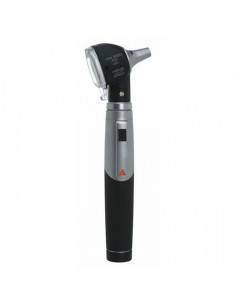
What is an otoscope?
An otoscope is a medical instrument used to look inside the ear canal and eardrum. The instrument consists of a handle with a lighting source and a magnifying glass at the end. Most otoscopes come with different attachments and lenses to examine different parts of the ear.
An otoscope is mainly used by doctors and medical professionals to examine patients' ears. Using the otoscope, the doctor can visually inspect the inside of the ear and identify any problems, such as infection, inflammation, or earwax buildup. An otoscope can also be used to remove foreign objects from the ear.
Who uses an otoscope?
Otoscopes are primarily used by physicians, audiologists, and other medical professionals who specialize in ear, nose, and throat conditions. The instrument is often used in GP practices, hospitals and clinics, but can also be used by patients at home to examine their own ears.
Which otoscope should I choose?
There are several brands and models of otoscopes on the market, including Welch Allyn , Riester and Heine . When choosing an otoscope, it is important to pay attention to the quality of the lens and illumination, the durability of the instrument and its compatibility with accessories and attachments. Welch Allyn otoscopes are known for their high quality and durability, while Riester and Heine otoscopes are known for their excellent optical performance. It is also important to consider what accessories and attachments are required for your specific needs, such as ear tips in different sizes and shapes.
How do I use an otoscope?
1. Using an otoscope requires some training and experience, but can be learned quickly with practice. Below are some basic steps for using an otoscope:
2. Ensure that the patient is sitting comfortably and tilting the head slightly to the opposite side of the ear to be examined.
3. Place the ear funnel of the otoscope into the patient's ear canal and rotate slightly to position the funnel properly. Turn on the lights and inspect the inside of the ear. Look for signs of infection, inflammation, or earwax buildup.
4. Gently move the otoscope to inspect the entire ear canal.
5. Repeat the procedure for the other ear
Frequently Asked Questions
An otoscope is used to look inside the ear canal, while an ear thermometer is used to measure body temperature through the ear. Although both instruments are used for the ear, they have different functions and applications.
Yes, an otoscope is safe to use when handled properly. However, it is important to be careful not to insert the instrument too deeply into the ear canal to avoid damaging the ear. It is recommended that this only be performed by a medical professional.
No, it is not recommended to use an otoscope to remove earwax. It is better to use a special earwax remover or warm water to soften the earwax and then have it removed by a medical professional.
It is important to clean your otoscope after each use to prevent the transfer of bacteria and prolong the life of the instrument. To do this, use a special cleaning agent for medical instruments or an alcohol solution and clean the otoscope thoroughly before storing it.
A fiber optic otoscope uses a bundle of fiber optic cables to guide light from the lamp in the handle to the end of the instrument. This technology provides bright and accurate illumination of the ear, allowing the doctor to easily inspect the inside of the ear.
An LED otoscope, on the other hand, uses LED lighting, which provides clear and efficient illumination of the ear. LED otoscopes generally have a long lifespan and require less maintenance than fiber optic otoscopes.
In general, both types of otoscopes are suitable for inspecting the ear and can be used by medical professionals. The choice between fiber optic and LED otoscopes depends on the user's personal preference and budget.











